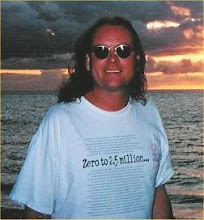
Pro Tools and the company behind it, Avid/Digidesign, has been in the news a bit lately. It's really pretty amazing actually, that a company that until recently only catered to "Music Industry Professionals" has done an about face in just a few years. It started a number of years ago when they began selling Pro Tools LE and their series of project studio interfaces. Given a decent Mac or PC, one could get into a system like this for way less than the original Pro Tools "HD" systems. Like $1K to $4K for an LE system (even less later) compared to something in the $10K to $40K price range for the HD systems that practically all major recording studios run. With Pro Tools LE, like the more expensive HD systems, you bought the rather pricey interface and the software came bundled with it.
Then came the software only "Pro Tools M-Powered", which is what I own, which is basically Pro Tools LE designed to run on the more generic M-Audio interfaces instead of the proprietary Digidesign ones that only run Pro Tools. As I've said before, it's really quite a lot of DAW power for the money ($249). I'm running it on a $99 M-Audio Audiophile 2496 Interface (which also runs Cubase, Sonar, etc). This was a version of Pro Tools for the project studio person who already owned an M-Audio interface, either FireWire, USB or PCI (of which there are many, and they have been popular for quite some time).
But in the last couple of weeks, things have REALLY changed. M-Audio is now selling something called "Pro Tools Essentials" which is a limited version of Pro Tools M-Powered that is bundled with several different pieces of M-Audio hardware, targeted squarely at beginners. This is truly "Garage Band meets Pro Tools"...Pro Tools for the masses...and you can now buy these packages for $99 to $149 at places like Best Buy, just one aisle over from that silly "Rock Band" and "Guitar Hero" trash that kids are going nuts over. From a marketing perspective, it's really quite clever: those 9 to 12 year old kids that are playing the games today may at some point decide they want "the real thing" and here it is -- A fully professional, though somewhat limited, recording rig that hooks up easily to your computer, and costs less than most gaming consoles. Pretty Sweet!

OK, enough news and advertising links!
So, in the last few weeks I've been really stretching my brain and learning Cubase as well as digging back into Pro Tools, which I have managed to get "stable" in both Vista64 and Windows 7x64. The key to stability with Pro Tools is what RTAS instruments you use (RTAS stands for "Real Time Audio Suite" and it is Digidesign's proprietary instrument and effect plug-in architecture). RTAS for Pro Tools = VST for everybody else, well except for Apple Logic, they have their own format as well, something called "AU". Most of the Virtual Instruments I have purchased say they support RTAS, but many of them are not really "approved" by Digidesign, and those are the ones that make Pro Tools unstable!
So, I got to thinking I would try to do a track using ONLY the virtual instruments that come with Pro Tools 8 M-Powered, and this is what came out of that. They say that placing limits on the tool set you use, in any medium, will often foster creativity, and in this case it seemed to work for me. One thing is certain, I am "spoiled for choice" when it comes to software instruments!
The guitar parts were produced using the excellent Structure Free sample playback unit, which I also used for one of the string synth parts. The other string synth / pad part was done with Xpand2. I used two instances of Vacuum, a virtual analogue modeled synth, one for bass and the other for the lead synth sound. I used the Mini Grand piano plug-in as well. On many of these instruments I also used the out-of-the-box effects plug-ins for things like Chorus, Delay, Reverb, and Compression.
Lastly, I used the new Boom drum machine plug-in. This one is very cool and nostalgic for me. It's modeled very much after the Roland-type drum machines from the 80's, of which I once owned two, a TR-707 and a TR-626. Even before those "sample-based" units came along, Roland made units like the CR-78, TR-808 and TR-909 which had all analogue circuitry. These distinctive sounding units are still used today, especially in Hip Hop, Rap, Chill and D&B styles of music. The sound set I used in Boom sounds a bit like a TR-808 or a CR-78.

I learned to program drum beats in 1986 on the above unit, a TR-707. The interface was just amazingly "immediate" and became very popular and imitated by other manufacturers. So, when I saw the user interface for Boom I felt right at home!

I don't have much to say about this track, other than it's kind of a happy, trippy little bit that started as a "guitar idea", so I called it "Guitar Idea One" for lack of a more inventive title (and because this little ditty probably doesn't deserve a more inventive title). But the morning after I first mixed it, I was playing it in the car, as I often do to see how the mix sounds outside of Hybernation Studio, and my 6-year-old Jonathan said "Daddy, what's that song called". I told him I didn't really have a name and would he like to name it? So, he listened in complete silence for 4 minutes and then said "I like it, I want to call it 'One Lonely Desert'". Ok, Jonathan, "One Lonely Desert" sounds good to me!
The "genre" is a little hard to pin down...I guess you could call this "progressive acoustic ambient chill" music.
Enjoy!
here is a direct link to the mp3 for non-shockwave environments





